KRATOM
Kratom For sale, Kratom is a tropical evergreen tree in the coffee family native to Southeast Asia. M. speciosa is indigenous to Thailand, Indonesia, Malaysia, Myanmar, and Papua New Guinea, where it has been used in traditional medicines since at least the nineteenth century. Kratom has opioid properties and some stimulant-like effects. kratom for sale online
Kratom For Sale
Kratom for sale, the best place to buy kratom online, Kratom is a tropical evergreen tree in the coffee family native to Southeast Asia. M. speciosa is indigenous to Thailand, Indonesia,
Malaysia, Myanmar, and Papua New Guinea, where it has been used in traditional medicines since at least the nineteenth century. Kratom has opioid properties and some stimulant-like
effects. best place to buy kratom online
As of 2018, kratom’s usefulness and safety as a therapeutic agent are unclear, since research into its use has been of poor quality. In February 2018, the United States Food and Drug Administration
(FDA) stated that there is no evidence that kratom is safe or effective for treating any condition. Some people take it for managing chronic pain, for treating opioid withdrawal symptoms, or – more recently – for recreational purposes. The onset of effects typically begins within five to ten minutes and lasts for two to five hours. buy kratom online
Common minor side effects include nausea, vomiting, and constipation. More severe side effects may include respiratory depression (decreased breathing), seizure, addiction, and psychosis.
Other side effects may include high heart rate and blood pressure, trouble sleeping, and, rarely, liver toxicity. When use is stopped, withdrawal symptoms may occur. Deaths have occurred
with kratom both by itself and mixed with other substances. Over 18 months in 2016 and 2017, 152 overdose deaths involving kratom were reported in the United States, with kratom as the
primary overdose agent in 91 of the deaths, and 7 with kratom being the only agent detected. Nine kratom-related deaths occurred in Sweden in 2011 and 2012, all involving a mixture of kratom
with other opioids. Serious toxicity is relatively rare and generally appears at high doses or when kratom is used with other substances. In the United States kratom use has increased rapidly
between 2011 to 2017.buy kratom online
As of 2018, there is growing international concern about a possible threat to public health from kratom use. In some jurisdictions, its sale and importation have been restricted, and several public
health authorities have raised alerts. Kratom is a controlled substance in 16 countries and, in 2014, the FDA banned importing and manufacturing kratom as a dietary supplement. In the United States,
there is consideration to make it a Schedule I drug buy kratom online. Sometimes, the finished product is mixed with other psychoactive drugs, such as caffeine and codeine. In 2019, the FDA warned
consumers that kratom remains unapproved for interstate commerce, may be unsafe in commercially available products, and is on an import alert which can lead to confiscation of imported supplies.
buy kratom online
Kratom for sale near me
Mitragyna speciosa is an evergreen tree that can grow to a height of 25 m (82 ft). Its trunk may grow to a 0.9 m (3 ft) diameter. The trunk is generally straight, and the outer bark is smooth and grey.
The leaves are dark green and glosses and can grow to over 14–20 cm (5.5–7.9 in) long and 7–12 cm (2.8–4.7 in) wide when fully open, are ovate-acuminate in shape, and opposite in growth pattern,
with 12–17 pairs of veins. The flowers grow in clusters of three at the ends of the branches. The calyx-tube is 2 mm (0.08 in) long and has five lobes; the corolla-tube is 2.5–3 millimeters (0.098–0.12 in)
long. buy kratom online
M. speciosa is indigenous to Thailand, Indonesia, Malaysia, Myanmar, and Papua New Guinea.
Mitragyna speciosa was first formally described by the Dutch colonial botanist Pieter Korthals in 1839, who named it as such; it was renamed and reclassified several times before George Darby Haviland provided the final name and classification in 1859.
Uses
Kratom for sale
The United States Drug Enforcement Administration stated in 2013: “There is no legitimate medical use for kratom”. Kratom has become popular as a recreational drug and has been promoted
with claims that it can improve moods, relieve pain and help with opiate addiction. As of 2013, kratom and key extracts have been studied in cells and in animals, but no clinical trials have been
conducted in the United States. In Thailand, a 2007 survey found that the lifetime, past year, and past 30 days kratom usage prevalences were 2.32%, 0.81% and 0.57%, respectively, among
respondents aged 12–65 years. This made kratom the most widely used drug in Thailand.buy kratom online
Traditional use buy kratom online
In cultures where the plant grows, kratom has been used in traditional medicine. The leaves are chewed to relieve musculoskeletal pain and increase energy, appetite, and sexual desire in ways similar to khat and coca. The leaves or extracts from them are used to heal wounds and as a local anesthetic. Extracts and leaves have been used to treat coughs, diarrhea, and intestinal infections.
They are also used as intestinal deworming agents in Thailand. Kratom is often used by workers in laborious or monotonous professions to stave off exhaustion as well as a mood enhancer and painkiller. In Thailand, kratom was “used as a snack to receive guests and was part of the ritual worship of ancestors and gods”. The herb is very bitter and is generally combined with a sweetener.buy kratom online
Opioid withdrawal
In 1836, kratom was reported to have been used as an opium substitute in Malaysia. Kratom was also used as an opium substitute in Thailand in the nineteenth century. As of 2016, Kratom is not approved for this or any other medical use.
Data on how often it is used worldwide are lacking, as it is not detected by typical drug-screening tests. Rates of kratom use appear to be increasing among those who have been self-managing chronic pain with opioids purchased without a prescription and are cycling (but not quitting) their use. As of 2018, there have been no formal trials to study the efficacy or safety of kratom to treat opioid addiction.
Recreational use
Starting in the 2010s, a tea-based cocktail known as “4×100” became popular among some young people across Southeast Asia and especially in Thailand. It is a mix of kratom leaves, cough syrup, Coca-Cola, and ice. Around 2011, people who consumed the cocktail were often viewed more negatively than users of traditional kratom, but not as negatively as users of heroin. As of 2012, use of the cocktail was a severe problem among youth in three provinces along the border of Malaysia and Southern Thailand.
In the US, as of 2015, kratom was available in head shops and over the Internet; the prevalence of its use was unknown at the time.
Adverse effects
At relatively low doses (1–5 g of raw leaves), at which there are mostly stimulant effects, side effects include contracted pupils and blushing; adverse effects related to stimulation include anxiety and agitation, and opioid-related effects like itching, nausea, loss of appetite, and increased urination begin to appear.
At moderate (5 to 15 g of raw leaves) doses and higher, at which opioid effects generally appear, additional adverse effects include tachycardia (an increased stimulant effect) as well as the opioid side effects of constipation, dizziness, hypotension, dry mouth, and sweating.
Long-term use of high doses of kratom may lead to the development of tolerance, dependence, and withdrawal symptoms on stopping. This involves opioid withdrawal with diarrhea, nausea, sweats, runny nose, muscle and joint pain, irritability, flu-like symptoms, tremors, and cravings. This may lead to a return to use.
Frequent use of high doses of kratom may cause tremors, anorexia, weight loss, seizures, and psychosis. Serious toxicity is relatively rare and generally appears at high doses or when kratom is used with other substances.
In July 2016, the Centers for Disease Control issued a report stating that between 2010 and 2015, US poison control centers received 660 reports of exposure to kratom. Medical outcomes associated with kratom exposure were reported as minor (minimal signs or symptoms, which resolved rapidly with no residual disability) for 162 (24.5%) exposures, moderate (non-life-threatening, with no residual disability, but requires some form of treatment) for 275 (41.7%) exposures and major (life-threatening signs or symptoms, with some residual disability) for 49 (7.4%) exposures. One death was reported in a person who was exposed to the medications paroxetine (an antidepressant) and lamotrigine (an anticonvulsant and mood stabilizer) in addition to kratom. For 173 (26.2%) exposure calls, no effects were reported, or poison center staff members were unable to follow-up regarding effects.
A 2019 report from the American Association of Poison Control Centers (AAPCC) stated that kratom use was increasing rapidly, with 1807 kratom exposures and a 52-fold increase occurring over the years 2011 to 2017.Most exposures occurred intentionally by adult males in their homes, with 32% of the incidents requiring admission to a health care facility and half of the admissions as a serious medical condition. Multiple-substance exposures were associated with a higher number of hospitalizations than single-substance exposures, and involved 11 deaths, including two due to kratom alone. Postmortem toxicology testing detected multiple substances for almost all those who died, with fentanyl and fentanyl analogs being the most frequently identified co-occurring substances.buy kratom online
Overdoses of kratom are managed similarly to opioid overdoses, and naloxone can be considered to treat an overdose that results in a reduced impulse to breathe, despite mixed results for its utility, based on animal models.
From October 2017 to February 2018 in the United States, 28 people in 20 different states were infected with salmonella, an outbreak occurring from the consumption of contaminated pills, powder, tea or unidentified sources of kratom. An analytical method using whole genome sequencing applied to samples from the infected people indicated that the salmonella outbreak likely had a common kratom source.
Respiratory depression
Respiratory depression is a major risk with opioids, especially those that have activity at the mu-opioid receptor. This is the leading cause of death from opioid use. In animal studies using very high doses, mitragynine caused respiratory depression, but less than morphine or codeine at similar dose ranges.The respiratory effects of kratom and its main bioactive components have not been studied in people.
A 2016 CDC report on kratom exposures did not list respiratory depression as a risk of kratom, nor did a 2013 DEA report. In 2016, the Food and Drug Administration listed respiratory depression as one of the concerns.Some literature review articles do not list respiratory depression; however other literature reviews and some medical textbooks do name respiratory depression as a risk.
Liver toxicity
In rare cases, chronic use of kratom has been linked to acute liver injury with associated symptoms of fatigue, nausea, itching and jaundice.Liver injury is associated with cholestasis and may involve acute renal failure.As of 2016, the mechanism by which kratom causes liver damage in some people was poorly understood.
Deaths
Kratom overdose is a subject of concern in many countries because of the rising number of hospitalizations and deaths from chronic kratom abuse. According to clinical reviews, a kratom overdose can cause liver toxicity, seizures, coma, and death, especially when in combination with alcohol abuse. Between 2011 and 2017, forty-four deaths were kratom-related. However many cases could not be fully assessed because of limited information.
In an analysis of overdose deaths occurring in 27 US states from 2016 to 2017, the CDC found that 152 deaths involved kratom abuse with other agents, while 91 of this total resulted primarily from kratom overdose. Nine deaths occurred in Sweden during 2010-11 relating to use of Krypton, a mixture of kratom, caffeine and O-desmethyltramadol, a prescription opioid analgesic.
Chemistry
The key psychoactive compounds in M. speciosa are mitragynine and 7-hydroxymitragynine (7-HMG),but there are more than 40 compounds in M. speciosa leaves. including about 25 alkaloids besides mitragynine and 7-hydroxymitragynine, such as ajmalicine (AKA raubasine, best known from Rauvolfia serpentina), corynantheidine (also found in Pausinystalia johimbe), mitraphylline, mitragynine pseudoindoxyl, and rhynchophylline.
Mitragynine is about 60% of alkaloid extractions, while 7-hydroxymitragynine is about 2%. Mitragynine is structurally similar to yohimbine and voacangine.
Detection in body fluids
The plant’s active compounds and metabolites are not detected by a typical drug screening test, but can be detected by more specialized testing.Blood mitragynine concentrations are expected to be in a range of 10–50 μg/L in persons using the drug recreationally. Detection in body fluids is typically by liquid chromatography-mass spectrometry.
Kratom Drug for sale| Kratom for sale online| Pharmacology
As of 2017, much of the pharmacology of kratom was not well understood, having stimulant effects at low doses, an opioid-like effect at higher doses, as well as sedative and sensory-suppressive effects.buy kratom online
Both mitragynine and 7-HMG have partial agonist activity at nanomolar concentrations at the human μ-opioid receptors; 7-HMG appears to have higher affinity. Other alkaloids have antagonist activity at micromolar concentrations, so effects of whole kratom may result from the interplay of these different alkaloids. Different assays on the human receptor yielded different results, and activities at mouse and guinea pig μ-opioid receptors appear to be different as well, and it is unknown which alkaloids are able to cross the blood brain barrier in humans, making in vitro and animal studies problematic to translate to humans. The binding of kratom alkaloids at human and model animal δ- and κ-opioid receptor subtypes was very unclear as of 2017.
Mitragynine also stimulates α2-adrenergic receptors, inhibiting the release of norepinephrine (noradrenaline); other compounds in this class include dexmedetomidine, which is used for sedation, and clonidine, which is used to manage anxiety and some symptoms of opioid withdrawal. This activity might explain why kratom can be dangerous when used in combination with other sedatives.
Mitragynine is metabolized in humans via phase I and phase II mechanisms with the resulting metabolites excreted in the urine. In in vitro experiments, kratom extracts inhibited CYP3A4, CYP2D6, and CYP1A2 enzymes, which results in significant potential for drug interactions.
Regulation
As of January 2018, neither the plant nor its alkaloids were listed in any of the Schedules of the United Nations Drug Conventions.
ASEAN
As of 2013, kratom was listed by ASEAN in its annex of products that cannot be included in traditional medicines and health supplements that are traded across ASEAN nations.
Australia and New Zealand
As of January 2015, kratom was controlled as a narcotic in Australia and under Medicines Regulations 1985 (Amended August 6, 2015) in New Zealand.
Canada
As of October 2016, it was not legal to market kratom for any use in which it was ingested, but could be marketed for other uses, such as incense. Health Canada has taken action against companies marketing it for ingestion.
Europe
As of 2011, the plant was controlled in Denmark, Latvia, Lithuania, Poland, Romania, and Sweden. In the UK, since 2016, the sale, import, and export of kratom are prohibited under the Psychoactive Substances Act.
In 2017, kratom was designated a Schedule 1 illegal drug (the highest level) in the Republic of Ireland, under the names 7-hydroxymitragynine and mitragynine.
Malaysia
The use of kratom leaves, known locally as ketum, is prohibited in Malaysia under Section 30 (3) Poisons Act 1952. Although prohibited by statute, the use of kratom remains widely spread because the tree grows natively and tea decoctions are readily available in local communities. Certain parties have urged the government to penalize the use of kratom under the Dangerous Drugs Act instead of the Poisons Act, which would carry heavier penalties.
Thailand
Possession of kratom leaves was illegal in Thailand until 2018. The Thai government had passed the Kratom Act 2486, effective August 3, 1943, which made planting the tree illegal, in response to a rise in its use when opium became very expensive in Thailand and the Thai government was attempting to gain control of the opium market. In 1979, the Thai government placed kratom, along with marijuana, in Category V of a five category classification of narcotics. Kratom accounted for less than 2% of arrests for narcotics between 1987 and 1992.
The government considered legalizing kratom in 2004, 2009, and 2013. In 2018, Thailand became the first Southeast Asian country to legalize kratom for medical purposes.
United States
In April 2019, the FDA issued a statement declaring that kratom was not approved for any medical use, was potentially unsafe in commercial products available in the United States, and remained on an import alert where imported supplies would be confiscated.
On April 4, 2018, the FDA issued the first mandatory recall in its history over concerns of salmonella contamination of several kratom-containing products. Samples of the products, manufactured by Triangle Pharmanaturals, and marketed under the brand name ‘Raw Form Organics’, tested positive for contamination and the manufacturer did not comply with federal requests for voluntary recall. FDA Commissioner Gottlieb stated that the recall was, “…based on the imminent health risk posed by the contamination of this product with salmonella” and not related to other regulatory concerns. Consumers were advised to immediately discard any such products to prevent serious health risks.
In February 2018, the commissioner of the FDA, Scott Gottlieb, released a statement describing further opioid-like properties of kratom and stating that it should not be used for any medical treatment or recreational use. Also in 2018, the FDA supervised the voluntary destruction of kratom dietary supplements by a nationwide distributor in Missouri and encouraged all companies involved in kratom commerce to remove their products from the market. On February 26, the FDA warned a California manufacturer of a kratom product called “Mitrasafe” that the supplement was not confirmed as safe, was not approved as a dietary supplement or drug and was illegal for interstate commerce.
In November 2017, the FDA cited serious concerns over the marketing and effects (including death) associated with the use of kratom in the United States, stating that “There is no reliable evidence to support the use of kratom as a treatment for opioid use disorder; there are currently no FDA-approved therapeutic uses of kratom… and the FDA has evidence to show that there are significant safety issues associated with its use.”
On August 30, 2016, the Drug Enforcement Administration (DEA) announced its intention to place the active materials in the kratom plant into Schedule I of the Controlled Substances Act as a warning about an imminent hazard to public safety, citing over 600 calls to poison control centers between 2010 and 2015 and 15 kratom-related deaths between 2014 and 2016. This drew strong protests among those using kratom to deal with chronic pain or wean themselves off opioids or alcohol. A group of 51 members of the U.S. House of Representatives and a group of nine Senators each sent letters to acting DEA administrator Chuck Rosenberg protesting the listing and around 140,000 people signed an online White House Petition protesting it. The DEA noted the responses but said that it intended to go forward with the listing; a spokesman said: “We can’t rely upon public opinion and anecdotal evidence. We have to rely upon science.” In October 2016, the DEA withdrew its notice of intent while inviting public comments over a review period ending on December 1, 2016.As of July 2016, Alabama, Arkansas, Indiana, Vermont, and Wisconsin had made kratom illegal, and the US Army had forbidden soldiers from using it. Between February 2014 and July 2016, U.S. law-enforcement authorities “encountered 55 tons of kratom,” or roughly “50 million individual doses,” according to the International Narcotics Control Board.
From 2010–2015, kratom-related reports of poisoning in the United States increased 10-fold. Because kratom was being marketed as a dietary supplement in 2014 – but had never been commonly used in the United States or confirmed to be safe – the FDA coordinated with other U.S. agencies to seize imported shipments.
| ktatom | 1 Lbs, 1/2 Lbs, 2 ounces, 4 ounces |
|---|
Be the first to review “KRATOM” Cancel reply
Related products
Psilocybin
Psychedelic Drugs
Psilocybin
Psilocybin
Psychedelic Drugs
Psychedelic Drugs
Psilocybin
Psychedelic Drugs

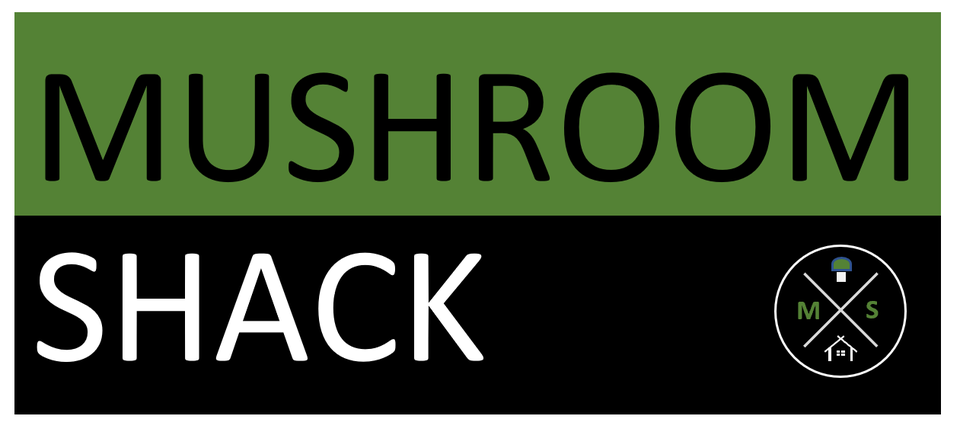
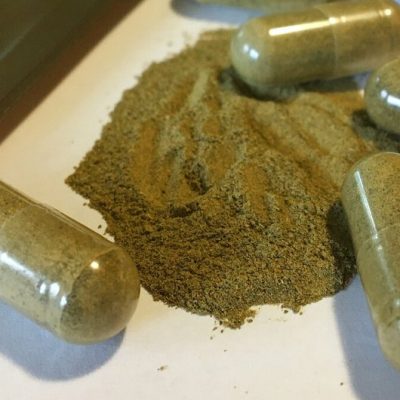

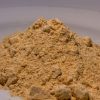

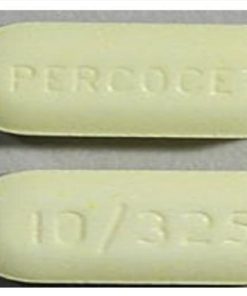
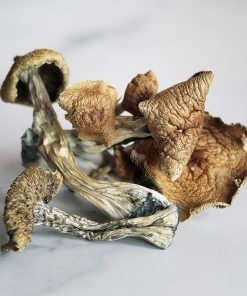
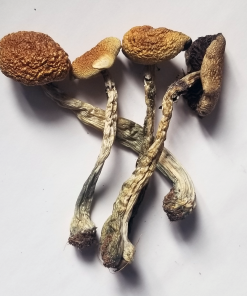
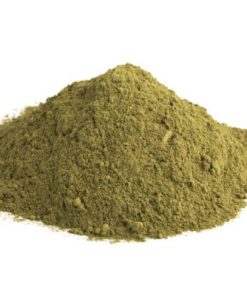
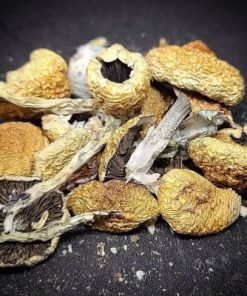


Reviews
There are no reviews yet.